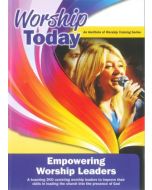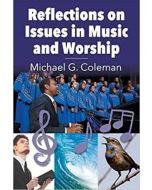In Tune with God
By Lilianne Doukhan
Hardcover, 301 pages
Autumn House ,
ISBN: 9780812705003
Qualifies for Free Shipping offer
Worship and music have been intimately connected since biblical times. Yet music in worship has become a point of contention—a great chasm separating the young and the not-so-young, the conservative and the liberal, and, quite possibly, the members of the church you attend. Is there a solution to this ongoing battle? Are there really certain styles of music that are good and others that are bad? How are we to honor God with our diverse musical tastes and talents?
Lilianne Doukhan takes on this sensitive issue with a remarkable combination of finesse and refreshing candor. Building upon the foundation of what music is, and what it is not, she explores the experience and meaning of music, its history down through the centuries, the current challenges of music ministry, and the genuine role of music as a component of worship.
Prologue: In Defense of Music
Part One: The Musical Experience
1: The Nature of Music
- The Principle of Balance
- Balance Between Melody, Harmony, and Rhythm
- Balance Between Variety and Repetition
- The Elements of Music
- Melody
- Harmony
- Rhythm
- Beat
- Syncopation
- The Effects of Rhythm
2: The Experience of Music
- Music as a Universal Experience
- Music as an Acquired Experience
3: The Meaning of Music
- Sacred Music
- The Purpose and Role of Sacred Music
- Sacred Music Conveys a Theology
- Sacred Music Is a Vehicle for Expression and Communication
- Sacred Music Is Defined Within a Cultural Setting
- Sacred Music Is God’s Delight
- Aesthetics Versus Ethics: Does Music Have Good and Evil in It?
- The Greek Theory of Ethos
- The Biblical Perspective
- Appropriate Versus Inappropriate
- How Does Music Convey Meaning?
- The Real Power of Music
- Intensification
- Beautification
- Stimulation and Empowerment
- Associations
- The Social Factor of Music
- A Responsible Use of Music
- Concluding Remarks
Part Two: Music In the Bible and the Writings of Ellen G. White: Principles and Lessons
4: A Philosophy of Music
- Beauty
- Mental, Spiritual, and Social Growth
5: Music for God
- Music as a Ministry
- Music, a God-centered Activity
- Music Pleasing to God
- Joy and Reverence
- Skillfulness and Excellence
- The Psalms as a Model for Worship Music
- Diversity
- The Old and the New
6: Music in the Temple
- Organization of Music in the Temple
- Functional and Participatory Music
- Instruments in the Temple
- Harps and Lyres
- Cymbals
- Trumpets
- Flutes and Drums
- Concluding Remarks
7: Music by the People and Among the People: A Collective Experience
- Music as a Means for Edification, Encouragement, Thanksgiving, and
- Relationship Building
- Music as an Agent for Tolerance and Respect
- Music as a Factor of Spirit and Truth: Balance Between Ecstasy and
- Discipline
- Formal Worship
- Emotional Worship
- Truth and Music
8: Music as a Personal Experience
- Music as a Factor of Growth and Transformation
9: A Theology of Music: Concluding Remarks
Part Three: The Church’s Wrestling With Music
10: Singing in the Early Church
- The New Testament Church
- The Church Fathers and Music
- The Council of Laodicea
11: Singing in the Time of the Reformation: Martin Luther
- Luther and Congregational Singing
- Luther’s Musical Background
- The Role of Singing in the Church
- The Role of Singing in Society
- The Practice of Contrafacta
- The Context of Contrafacta
- A Definition of Contrafacta
- The Texts of Luther’s Contrafacta Chorale
- The Melodies of Luther’s Contrafacta Chorales
- Rhythm in Luther’s Chorales
- The Derhythmization of the Lutheran Chorale
- Sacred Versus Secular in Luther’s Time
- Luther’s Relevancy for Today
- Luther and Art Music
12: Calvin and Music
13: The Council of Trent
14: Heirs of the Reformation
Part Four: The Contemporary Challenge
15: The Origins of the Popular Stream
16: Dissipating the Misunderstandings
17: The Strengths of Contemporary Worship Music (CWM)
18: The Challenges of CWM
- Truth in Theology
- Truth in Music
- Truth in Performance
- Technological Enhancement
- Sound Tracks
- Emotional Manipulation
- Truth in Attitude
- Associations
- Concluding Remarks
Excursus: The Case of Rock Music
Part Five: Music Ministry in the Church
19: The Role of the Pastor in Music Ministry
- Provide an Understanding of Worship to the Congregation and the Musicians
- Safeguard the Worship Values
- Safeguard the Unity of the Church
- Safeguard the Relevancy of the Music
- Safeguard the Unity of Theme
20: The Role of the Church Musician in Music Ministry
- Understand the Nature of Worship
- Understand the Relationship Between the Pastor and His/Her Congregation
- Understand the Role of the Musician and Music in Worship
21: The Pastor/Musician Relationship
22: The Role of the Worship Commission
- The Choice of the Worship Commission Members
- The Qualities of the Worship Commission Members
- The Responsibilities of the Worship Commission
23: Changes in Worship and Music Through History: The Difficult Task of Change
- The Process of Change
- The Power of Tradition
- The Power of the Past
- Changes in Biblical Worship Through History
- Changes in Church Music Through History
- Reactions of the Church Toward Change
- Tension and Uneasiness in the Face of Worship Practices
- Conflicting Views on the Purpose of Church Music
- The Exclusive Status of High Church Music
- The Relationship Between Sacred and Secular Music
Epilogue: In Tune With God
Appendix 1: Sanctuary: Worship-leading Guidelines
Appendix 2: Worship Survey
Share your thoughts with other customers
Write review Contact
Contact![Adventist Book Centre Australia [with ABC Christian Books, Better Books and Food and Christian Life Resources] Adventist Book Centre Australia [with ABC Christian Books, Better Books and Food and Christian Life Resources]](https://adventistbookcentrecomau002.stagingwebsite.au/media/logo/stores/1/Adventist-Book-Centre-Australia-Logo.jpg)






